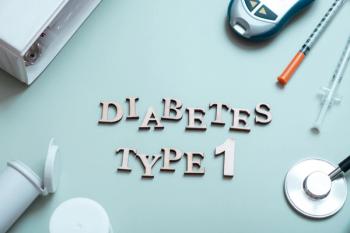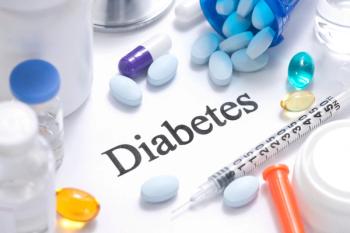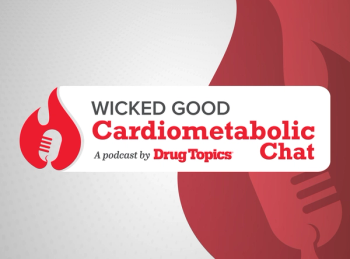
Ozempic, Other GLP-1 Therapies Caused Major Increase in Medicare Spending
After semaglutide and tirzepatide were approved, and ozempic use continues to rise, Medicare spending is also increasing because of a high demand for GLP-1 therapies.
In 2022, gross total Medicare spending for GLP-1 therapies used to treat diabetes reached $57 billion, up from $57 million in 2018, according to a new analysis from KFF.1 KFF looked at Medicare Part D spending before rebates of semaglutide (Ozempic), semaglutide (Rybelsus), and tirzepatide (Mounjaro).
Increased attention has been on the GLP-1 class of medications after semaglutide was approved as Wegovy and tirzepatide as Zepbound to treat obesity.
Medicare Part D is unable to cover weight loss medications because of the way the law was written. But Medicare provides coverage for the GLP-1 therapies that treat patients with diabetes or other medically accepted indications.
This is why Medicare is now able to provide coverage for Wegovy for some patients. Wegovy is a 2.4 mg version of semaglutide approved for weight loss. It was recently also approved for an additional indication: to reduce the risk of cardiovascular death, heart attack and stroke in overweight patients with heart disease. The approval is based on the SELECT cardiovascular outcomes trial, which demonstrated that Wegovy statistically significantly reduced the risk of major adverse cardiovascular events by 20% when added to standard of care.
But despite the prohibition against coverage for weight loss, Medicare spending on GLP-1 therapies has increased tremendously. For example, Ozempic in 2022 was the 6th highest drug in terms of Medicare by total gross spending at $4.6 billion, up from $2.6 billion in 2021.
KFF officials speculate that the diabetes drugs Ozempic and Rybelsus could be targeted for possible drug price negotiation in 2025, especially if these therapies are approved for additional uses or legislation allows for Medicare coverage for weight loss. Ozempic has a list price of $935.77 for 1 pen and Rybelsus has a list price of $935.77 for 30 tablets.
READ MORE:
New uses could be on the horizon for Ozempic. Earlier this month, Novo Nordisk—the manufacturer of Ozempic, Rybelsus, and Wegovy—announced that Ozempic 1 mg reduced kidney disease progression, major adverse cardiovascular events, and death by 24%, according to results from the FLOW trial.2 The trial was stopped early on the recommendation from an independent data monitoring committee because an interim analysis found the study met the criteria for efficacy.
Additionally, at least 1 bill has been introduced in the Senate to expand coverage in Medicare for obesity treatments. Sponsored by Senator Thomas Carper (D, Delaware), the bipartisan bill would expand coverage for medications and provide for regular screenings. It has been referred to the Committee on Finance.
“By tackling obesity head on, we can better prevent numerous additional diseases such as heart disease and diabetes, helping lengthen Americans’ health spans while also saving taxpayer and Medicare dollars over the long run,” cosponsor Brad Wenstrup (R, Ohio) said in a news release when the bill was introduced in September 2023.3
Kff said in its brief that competition among GLP-1 drugs could result in lower prices and higher rebates. “But the combination of intense demand, new uses, and high prices for these treatments is likely to place tremendous pressure on Medicare spending, Part D plan costs, and premiums for Part D coverage,” KFF officials said.
References
1. Cibanski J, Neuman T. Medicare Spending on Ozempic and Other GLP-1s Is Skyrocketing. News Report. KFF. March 22, 2024. Accessed March 29, 2024. https://www.kff.org/policy-watch/medicare-spending-on-ozempic-and-other-glp-1s-is-skyrocketing/
2. Novo Nordisk A/S: Semaglutide 1.0 mg demonstrates 24% reduction in the risk of kidney disease-related events in people with type 2 diabetes and chronic kidney disease in the FLOW trial. News Release. Novo Nordisk. March 5, 2024. Accessed March 29, 2024. https://www.novonordisk.com/content/nncorp/global/en/news-and-media/news-and-ir-materials/news-details.html?id=167028
3. Senators Carper and Cassidy and Representatives Ruiz and Wenstrup Take Action to Combat the Obesity Epidemic. News Release. Tom Carper. July 20, 2023. Accessed AMrch 29, 2024. https://www.carper.senate.gov/newsroom/press-releases/senators-carper-and-cassidy-and-representatives-ruiz-and-wenstrup-take-action-to-combat-the-obesity-epidemic/
Newsletter
Pharmacy practice is always changing. Stay ahead of the curve with the Drug Topics newsletter and get the latest drug information, industry trends, and patient care tips.





















































































































































